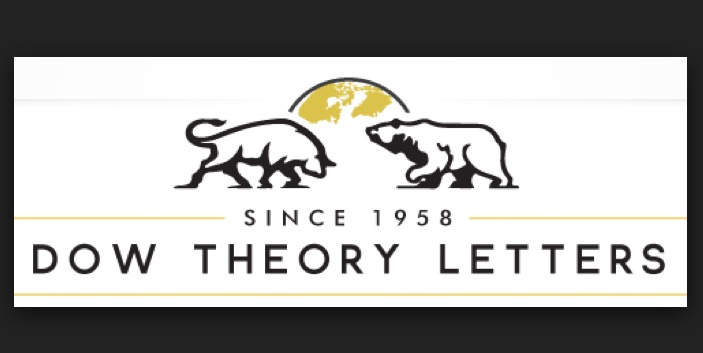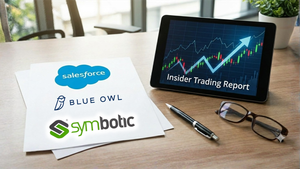
New York, NY – November 25, 2025 – The S&P 500 finds itself in a delicate balance, reacting to a mixed bag of economic data that paints a nuanced picture of the U.S. economy. Recent reports, notably the delayed September retail sales and Producer Price Index (PPI), have provided investors with fresh insights into consumer behavior and inflationary pressures. While retail sales indicated a slowdown in consumer momentum, the PPI suggested a more contained wholesale inflation environment. This intricate data landscape, coupled with a significant surge in expectations for a Federal Reserve interest rate cut, has led to a dynamic and at times volatile market sentiment.
The immediate implications for the S&P 500 have been a testament to the market's current sensitivity. On November 25, 2025, following the release of the delayed September data, the index initially showed a mixed to slightly negative reaction. However, a powerful undercurrent of optimism regarding potential monetary easing swiftly propelled the market higher, underscoring how deeply investor confidence is tied to the Federal Reserve's next moves. This period of economic crosscurrents is further complicated by a recent government shutdown, which created a significant void in critical economic data, forcing both policymakers and investors to navigate with an incomplete picture.
Detailed Economic Snapshot: Data Delays and Divergent Trends
The economic narrative around November 25, 2025, is significantly shaped by the belated release of key indicators and the broader context of a government shutdown. The U.S. Census Bureau finally released the September 2025 retail sales data on Tuesday, November 25, 2025, after a delay of over a month due to a 43-day government shutdown that impacted the publication of various economic statistics. This report showed a modest 0.2% month-over-month increase in U.S. retail sales, reaching $733.3 billion, falling short of market expectations for a 0.4% rise. More critically, "core" retail sales, which exclude volatile categories and are a key input for calculating gross domestic product (GDP), saw a 0.1% decline in September, marking the first drop in five months. This indicated a clear deceleration in consumer momentum, particularly affecting lower-income shoppers grappling with persistent high prices.
Concurrently, the Bureau of Labor Statistics (BLS) released the September 2025 Producer Price Index (PPI) report on the same day, also delayed from its original mid-October schedule. The PPI for final demand increased by 0.3% in September on a seasonally adjusted basis, aligning with economist projections. On an unadjusted basis, the index advanced 2.7% for the 12 months ending in September. The core PPI, excluding volatile food, energy, and trade services, edged up a mere 0.1% in September and rose 2.9% over the 12 months, suggesting that wholesale inflationary pressures remained largely contained. It's important to note that the October U.S. Consumer Price Index (CPI) report was canceled entirely due to the government shutdown, leaving a critical information gap regarding consumer-level inflation leading up to this date. The next CPI release, covering November data, is scheduled for December 18, 2025.
These delayed and mixed reports contributed to a nuanced market reaction. On the day of their release, the S&P 500 initially showed little change, with the Nasdaq composite (NASDAQ: IXIC) slipping slightly. However, the broader market sentiment around this period was heavily influenced by increasing expectations for a Federal Reserve interest rate cut. Softer labor market data and dovish comments from Federal Reserve officials had already fueled a significant rally in the preceding days. By November 25th, the CME FedWatch Tool indicated an approximately 85% likelihood of a quarter-percentage point rate cut at the Fed's upcoming December meeting, up from 81% before the data releases. This anticipation of monetary easing provided an underlying supportive tone to equities, despite the cautious signals from consumer spending. The overall economic narrative points to an economy grappling with decelerating growth, persistent, albeit contained, inflation, and a potentially weakening labor market, particularly affecting lower-income households and creating a "K-shaped economy."
Corporate Fortunes: Winners and Losers in a Shifting Landscape
The current economic environment, characterized by moderating consumer spending and contained wholesale inflation, is creating a clear bifurcation in the S&P 500, with distinct winners and losers emerging across various sectors.
On the losing side, the Consumer Discretionary sector faces significant headwinds. Companies heavily reliant on non-essential spending, especially from lower and middle-income households, are likely to experience reduced demand. This includes mid-to-lower tier apparel retailers, general merchandise stores, and casual dining restaurants. Large-ticket discretionary items such as furniture, home furnishings, and consumer electronics, which saw declines or minimal growth in recent retail sales data, are also expected to struggle as consumers delay big purchases. The automotive sector, despite some resilience, is constrained by high vehicle prices and elevated auto loan rates, leading to underperformance in funds like the Consumer Discretionary Select Sector SPDR Fund (NYSEARCA: XLY). These companies will likely face reduced revenue, increased pressure to offer discounts, and consequently, lower profit margins.
Conversely, the Consumer Staples sector, particularly value-oriented companies, is poised for resilience or even growth. Demand for essential goods remains stable during economic slowdowns. Food and beverage manufacturers and grocery store chains, such as Kroger (NYSE: KR) or Walmart (NYSE: WMT), will continue to see consistent demand, with consumers potentially trading down from premium brands to more affordable private labels. Discount retailers and mass merchandisers, like Dollar General (NYSE: DG) or Costco (NASDAQ: COST), could also see increased traffic as consumers actively seek affordability. Furthermore, Manufacturing and Industrial sectors stand to benefit from contained wholesale inflation. Companies producing intermediate goods or finished products will experience lower input costs for raw materials, components, and energy. This can lead to improved gross profit margins or allow them to offer more competitive pricing without sacrificing profitability, a crucial advantage in a value-conscious market. Specific technology segments, such as those providing AI-enabled retail technology, might also find opportunities as consumers become more deliberate in their shopping, utilizing AI tools for price comparison and deal hunting.
Wider Significance: Reshaping Consumer Habits and Monetary Policy
The S&P 500's response to these economic reports underscores a broader shift in industry trends and has significant implications for monetary policy. Consumer behavior is undergoing a notable transformation; inflation has eroded purchasing power, prompting consumers to become more selective, prioritize essential items, and actively seek value. This translates into strategies like trading down to lower-priced alternatives, embracing private-label brands, and making more frequent, smaller shopping trips to manage budgets. Retailers are compelled to adapt by focusing on personalized discounts, loyalty programs, and seamless omnichannel experiences to retain increasingly discerning customers.
Supply chains are also in a state of adjustment. Persistent inflationary pressures are increasing costs for raw materials, energy, and transportation. Businesses are responding by moving away from "just-in-time" to "just-in-case" inventory models to build resilience against future price hikes and secure supply. Diversifying suppliers and manufacturing locations, such as adopting "China plus one" strategies or nearshoring, are becoming more common to mitigate geopolitical risks and production disruptions. Retailers are investing in advanced supply chain visibility tools and AI-powered analytics to better forecast demand and optimize inventory management.
The Federal Reserve's monetary policy outlook is perhaps the most significant ripple effect. Retail sales and inflation reports are critical inputs for the Fed's decisions on interest rates, as it aims to balance maximum employment with price stability. A significant slowdown in consumer spending, as hinted by the moderated September retail sales, could provide the Fed with more reason to consider rate cuts to stimulate economic activity. Conversely, if inflation remains stubbornly above the 2% target, the Fed might maintain a "higher-for-longer" interest rate stance. Around November 25, 2025, market traders were pricing in a high probability of a December rate cut, spurred by dovish remarks from some Federal Reserve officials. Historically, periods following initial interest rate cuts have often preceded significant bull markets for the S&P 500, as seen from 1995 to 1999 and 2019 to 2021. However, the current situation also draws comparisons to the "stagflation" era of the 1970s, where the S&P 500 faced headwinds from economic stagnation and high inflation, serving as a cautionary tale of P/E multiple compression in an inflationary environment. The differing views among Fed officials on balancing a cooling labor market with persistent inflation highlight the complexity of current policymaking, especially with the added uncertainty of missing economic data due to the government shutdown.
What Comes Next: Navigating Uncertainty and Strategic Pivots
Looking ahead, the S&P 500 and the broader economy face a landscape defined by ongoing Federal Reserve actions, evolving consumer behavior, and a complex interplay of global economic factors. In the short term, the S&P 500 is showing resilience, with some forecasts predicting continued bullish trends. Goldman Sachs Research, for instance, had already raised its S&P 500 forecast, expecting it to reach 6,600 in the next six months and 6,900 in the next 12 months, supported by anticipated earlier and deeper rate easing from the Fed. However, this optimism is tempered by the aggressive pricing-in of these cuts by the market and lingering policy uncertainty, particularly concerning trade tariffs.
Longer term, into 2026 and beyond, global GDP growth is projected to moderate, supported by resilient consumption and business spending, especially in AI-related investments. However, U.S. inflation is forecast to remain sticky, potentially averaging above 3%, with upside risks from tariffs. The labor market is expected to continue weakening, with the unemployment rate projected to rise to 4.5% in 2026. Real consumer spending is also expected to slow, impacted by higher inflation eroding purchasing power. S&P 500 earnings growth is still anticipated, with Goldman Sachs forecasting 7% growth for 2025 and 2026, driven by an avoidance of recession and continued economic expansion.
Businesses will need to implement strategic pivots to thrive in this environment. Agility and innovation, particularly leveraging generative AI, will be crucial for enhancing operational efficiency and customer engagement. A stronger customer-centric approach, delivering personalized experiences and fostering loyalty, will be paramount as consumers become more cautious. Building resilience in supply chains, diversifying suppliers, and investing in AI-powered forecasting tools are essential to mitigate risks from geopolitical tensions and disruptions. Financial prudence, including optimizing cash flow and scrutinizing operational costs, will also be key. Market opportunities may emerge in private markets, the AI and technology sector, healthcare and wellness, and the expanding subscription economy. Conversely, challenges include potentially stretched public market valuations, ongoing geopolitical risks, the threat of stagflation due to tariffs and subdued growth, and continued consumer price sensitivity. Potential scenarios range from a baseline of moderate growth to an optimistic "Goldilocks" outcome or a pessimistic scenario involving recession and stagflation, underscoring the need for adaptable strategies.
Comprehensive Wrap-Up: A Market at a Crossroads
The S&P 500's recent reactions to economic data underscore a market at a crossroads, grappling with a confluence of moderating consumer behavior, persistent yet contained inflation, and the overriding influence of Federal Reserve policy. The most critical takeaway is the significant disruption to reliable economic data caused by the government shutdown, creating a "murky policy environment" for both investors and policymakers. This data void has amplified the market's sensitivity to any available indicators, however incomplete.
Moving forward, the market's trajectory will be inextricably linked to the Federal Reserve's actions, particularly its December 10th meeting. The absence of the October CPI report places an immense burden on the Fed to assess the true state of inflation. Despite this, the strong market rally fueled by rate cut expectations signals that investors are keenly anticipating a shift towards monetary easing. While a year-end rally for the S&P 500 remains a possibility, supported by renewed federal spending and the hope of easing, concerns about valuations, especially in the AI-led technology sector, persist.
The lasting significance of these trends lies in the reinforcement of the "K-shaped economy," where disparate financial health among income groups could challenge the Fed's ability to achieve its dual mandate. The debate over whether inflation is primarily demand-driven or supply-shock induced will continue to shape policy responses. For investors, the coming months demand vigilance. Close attention should be paid to the Federal Reserve's December decision and any forward guidance. Upcoming data releases, particularly the November CPI report (December 18), the combined October/November jobs report (December 16), and the initial estimate of third-quarter GDP (December 23), will be crucial for gaining a clearer economic picture. Additionally, monitoring holiday spending trends and corporate earnings guidance will provide vital insights into consumer resilience and business health. In this environment of elevated uncertainty, a well-diversified portfolio and a clear understanding of one's long-term risk tolerance remain paramount.
This content is intended for informational purposes only and is not financial advice






